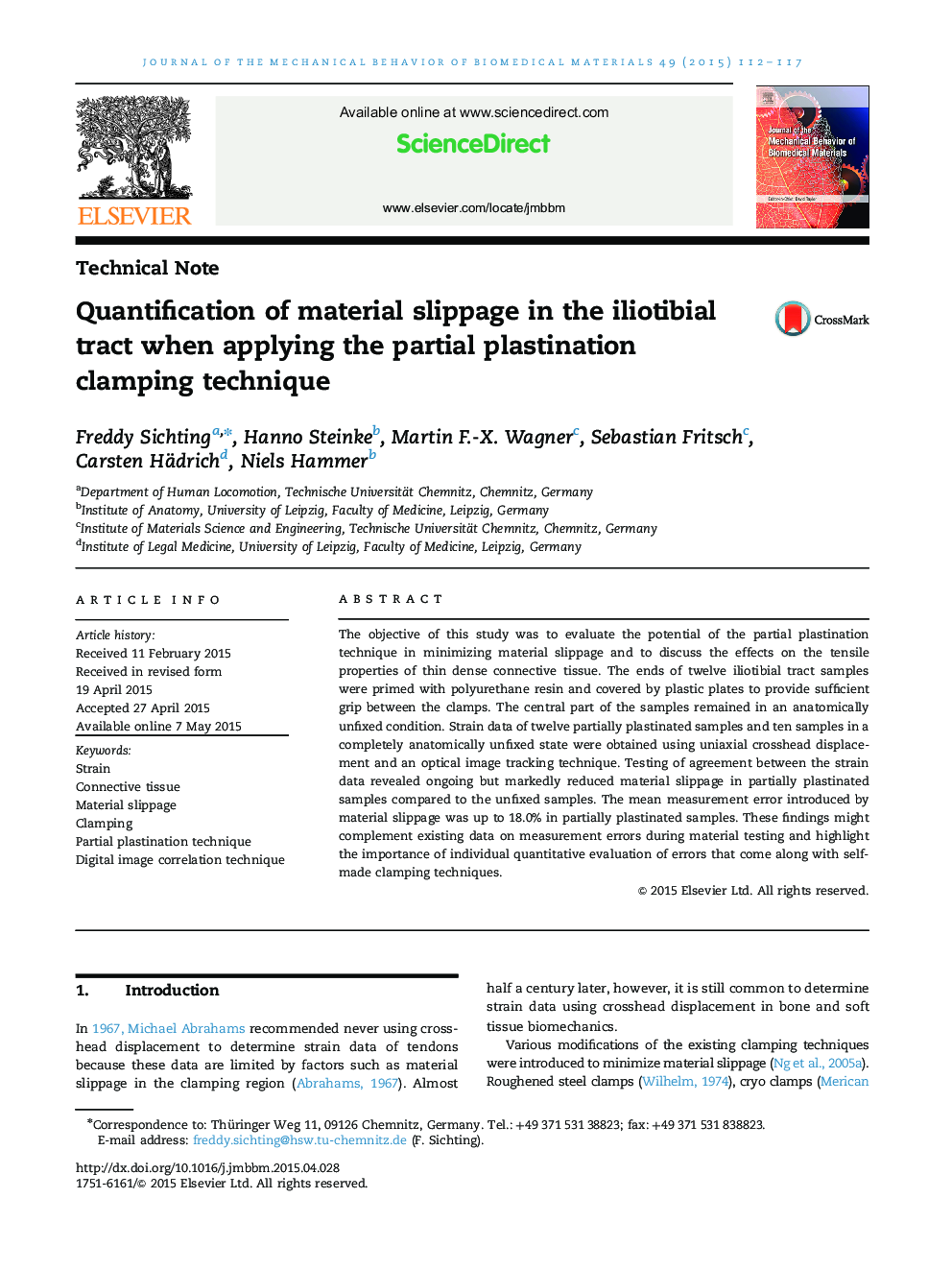| Article ID | Journal | Published Year | Pages | File Type |
|---|---|---|---|---|
| 810589 | Journal of the Mechanical Behavior of Biomedical Materials | 2015 | 6 Pages |
•Study provides quantitative data regarding the reliability of the partial plastination technique.•The partial plastination technique shows a clear reduction in material slippage.•Optical strain measurement is a valuable tool to detect material slippage.
The objective of this study was to evaluate the potential of the partial plastination technique in minimizing material slippage and to discuss the effects on the tensile properties of thin dense connective tissue. The ends of twelve iliotibial tract samples were primed with polyurethane resin and covered by plastic plates to provide sufficient grip between the clamps. The central part of the samples remained in an anatomically unfixed condition. Strain data of twelve partially plastinated samples and ten samples in a completely anatomically unfixed state were obtained using uniaxial crosshead displacement and an optical image tracking technique. Testing of agreement between the strain data revealed ongoing but markedly reduced material slippage in partially plastinated samples compared to the unfixed samples. The mean measurement error introduced by material slippage was up to 18.0% in partially plastinated samples. These findings might complement existing data on measurement errors during material testing and highlight the importance of individual quantitative evaluation of errors that come along with self-made clamping techniques.
Graphical abstractFigure optionsDownload full-size imageDownload high-quality image (141 K)Download as PowerPoint slide
